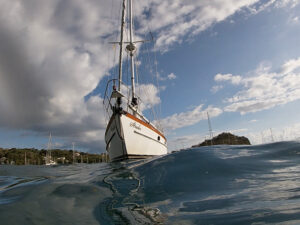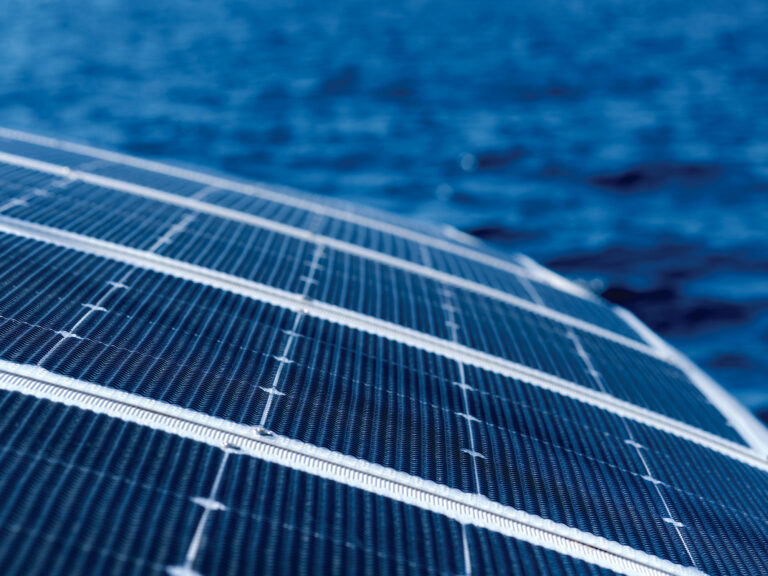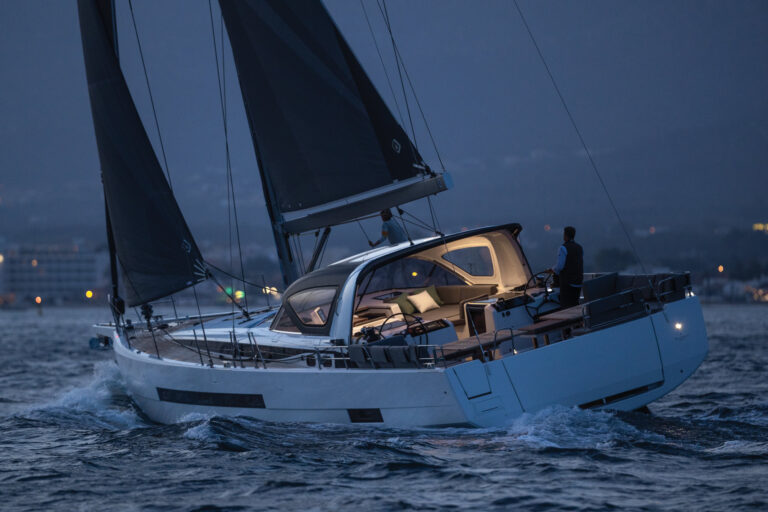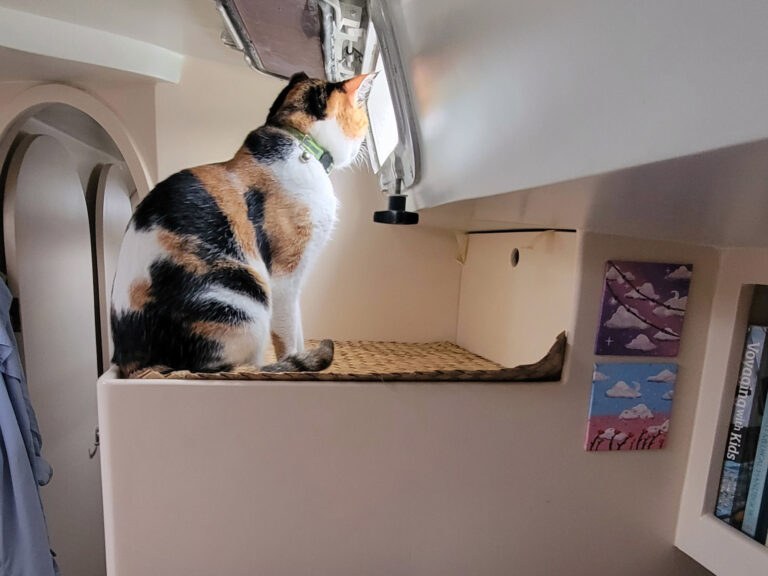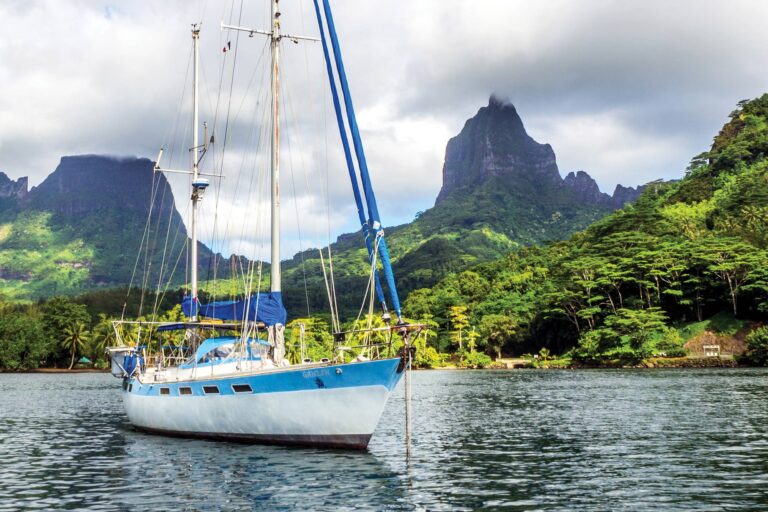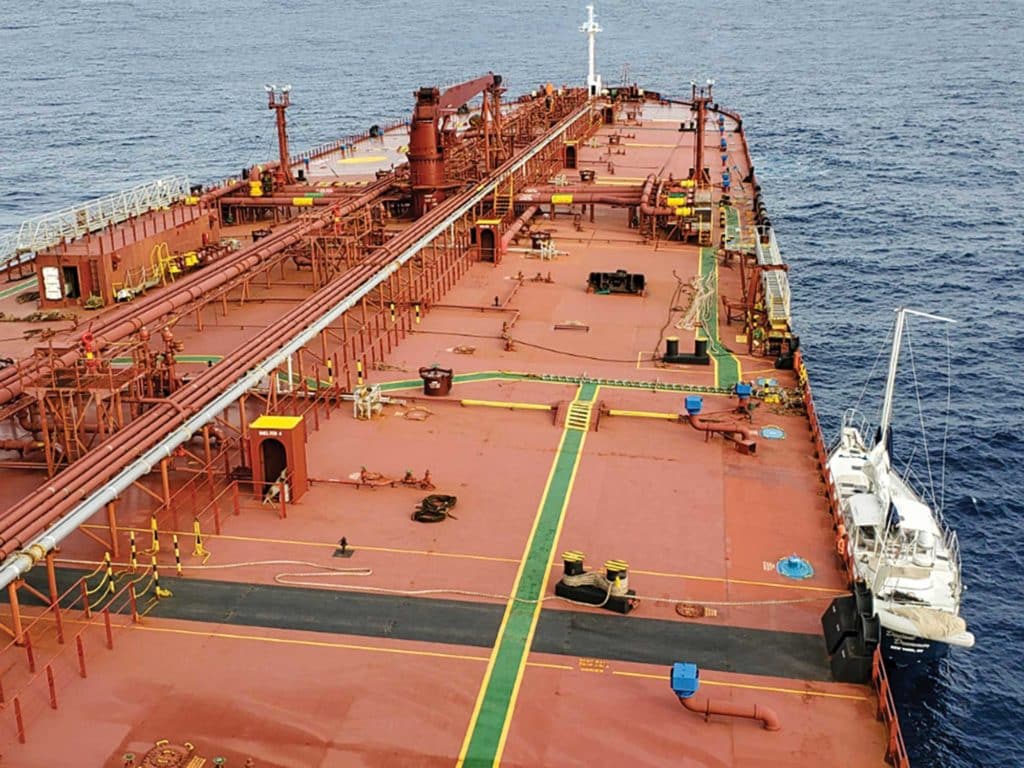
The mast came down, on the proverbial “dark and stormy night,” about 0330. Of course, these things always happen at night, with no moon, over 30 knots of breeze and correspondingly big seas. Aboard the 68-foot cutter Distant Drummer, we were about 450 miles into a rhumb-line trip from Myrtle Beach, South Carolina, to St. Thomas, USVI. Capt. Chuck Austin and I had done this trip numerous times on his 52-foot cutter, Powerless, often just the two of us. This time we had six on board, in addition to Chuck and me: his son, Chuck Jr.; Teri Wilson; and newly arrived crew Lewis and Sally, from the United Kingdom.
After I watched the spar collapse, I yelled out: “All hands on deck! We’ve lost the rig!”
We had departed on a calm morning in the middle of last November, and motorsailed across the Gulf Stream in a light southwesterly breeze with a double-reefed mainsail and staysail, which was self-tending on a wishbone-boom arrangement. The mainsail on Drummer was fully battened and had so much roach that one reef was necessary just to clear the backstay. The mast on this boat stood almost 90 feet above the water, so two reefs and a staysail was still quite a bit of sail.
Since we were heading southeast with that southwest wind, we cracked off just a bit to make the ride more comfortable. Then, as near as I can tell, with the wind and seas on the starboard quarter, we did a bit of a “snap roll,” and the mast broke. I don’t know what failed.
The mast had swept-back spreaders, in three sections, and the joints were just about at the spreader junctions. So whatever let go first, the mast ended up with the lower section, up to the first spreaders, still up and supported by the aft lowers. The middle, broken section was hanging to port, as was the top section, which had also failed; this too was hanging to leeward (port), and was dragging everything along. By “everything” I mean the rest of the mainsail, the staysail with the wishbone, and the roller-furled jib, along with various lines, sheets, lazy jacks and halyards. It was still dark, and we were lying abeam in 25 knots.
Let the fun begin.
This was all tremendously dangerous. We were lying ahull in some pretty good seas, with most of the mast and sails in the water on the lee side, attached to the boat with a whole bunch of lines. If anyone had gone over the side during this, the chances of a successful recovery were not guaranteed. The first thing to do was nothing: Make sure no one started the engine and put it in gear. Then, remembering stories of hulls damaged by broken spars, I tried to hold the mast section at the second spreaders to keep the whole mess from doing too much damage to the side of the boat. We had to get rid of the entire mess.
“Cut away the rigging” is something that pops to mind in this situation. When I was preparing my own boat, Gladiator, for the first BOC Challenge solo round-the-world race in the early 1980s, I’d been convinced to buy a small hydraulic cutter for just this situation, and told to cut the turnbuckle bolts because the rod rigging was very difficult to cut. Of course, we didn’t have such a tool aboard Distant Drummer. The captain and his son did have a hacksaw and big cable cutters, but they weren’t getting us anywhere. We considered using an angle grinder; we found the cutting discs but couldn’t locate the grinder.
I suspect that it was the staysail that changed our direction of attack. It had been set up with a Highfield lever for a quick release, so that’s what we did; by releasing the lever and pulling the quick-release pin, we were able to throw the entire staysail rig overboard, including the large, heavy wishbone rig. Next, Lewis and I addressed the forestay with regular pliers, channel-lock pliers, a 2-pound sledge hammer and a heavy screwdriver. Getting the cotter pins out was the hardest part (and that exercise has forever changed my mind about how to bend a cotter key; more on this later). Once they were gone, knocking out the clevis pins was easy, even under tension. Lewis and I moved from the headstay to the starboard cap shroud, then the port cap, then both of the split backstays. That took care of the heavy wire.
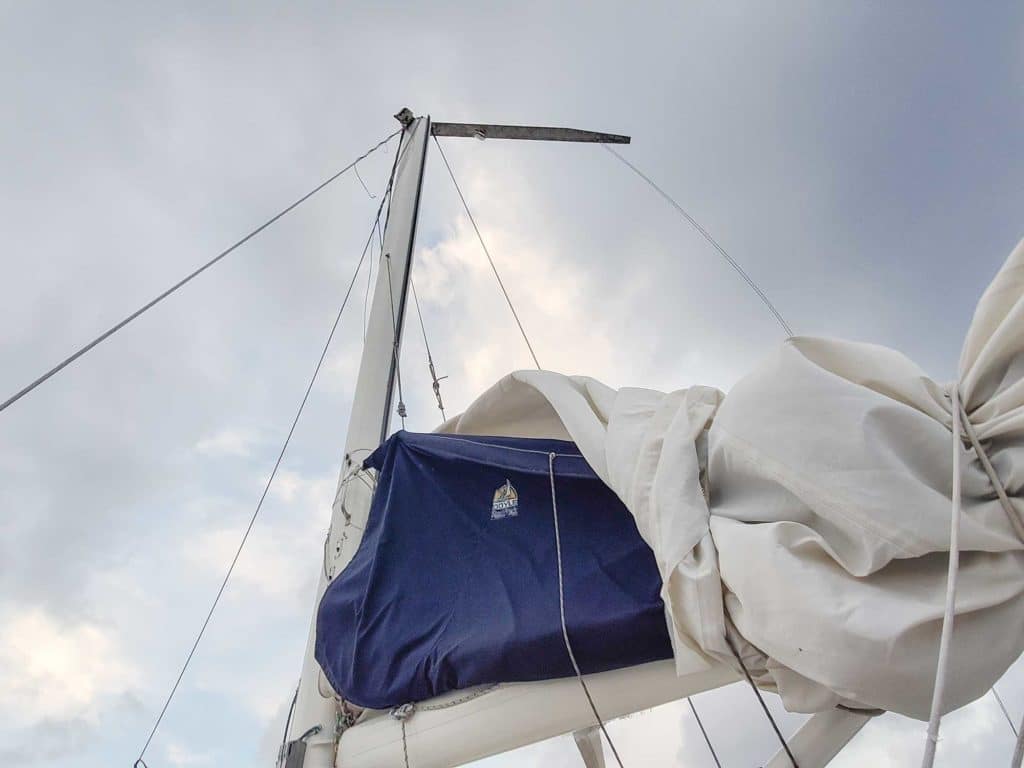
We then started on all the line that was holding this sea anchor of a spar to the boat. The best tools here were a pair of sharp tin snips and one of those folding knives with the replaceable blades. The roller-furling line, staysail sheet, two spinnaker halyards and lazy jacks all were cut. But the lower broken mast section was still hanging from the first spreader. I thought it was the internal wiring (and I am sure that was part of it), but the main halyard and jib halyard were still attached—which didn’t immediately dawn on anyone. But just a few minutes later, all the remaining attachment points in the mast stub chaffed through, and the last section of the mast went over the side.
However, the mainsail wouldn’t rip along a seam. The remaining part of the rig was now being held to the boat by the mainsail, which was attached to the stub and the boom. This Chuck slashed with the folding knife. The sail ripped free of the last sail slides, we cut the topping lift, and we were free of everything. Whew.
By now it was first light and we went around the boat twice, checking for anything hanging over the side. Loose lines were pulled back on board, and when I was sure that nothing else was over the side, we started the engine and engaged forward for just a second, then again with some throttle. We were again underway.
Using part of a halyard and applying tension using the anchor windlass, we then rigged a temporary headstay. This would help support the remaining stub of mast, which was held by only the two aft lowers and was also supporting the boom and part of the mainsail. We set a course for Savannah, Georgia, with the logic that the set from the Gulf Stream would actually take us to Charleston, South Carolina. No one was hurt in this whole episode; not a drip of blood was spilled. Yes, there would be a few days of sore muscles and bad dreams, but we had enough fuel to drive to England, a full fridge and freezer, a working generator and 800 gallons of water. We were in no distress or danger. Distant Drummer was now a motorboat.
Then things took a turn for the worse.
Our masthead VHF-radio antenna had gone over the side, however we still had the single sideband because the antenna was not the backstay, but rather a whip on the stern that was not damaged. We had a waterproof handheld VHF and plenty of batteries, but the captain used the satphone to call a friend in Little River, South Carolina, and asked him to notify the US Coast Guard about our situation. The Coasties in turn contacted the captain on the satphone. I don’t know what transpired in those conversations, but somehow the perception was that we were in trouble, and a distress signal was broadcast, meaning vessels in the area were required to lend assistance.
Sometime later that day, the engine fuel alarm went off. We had about 600 gallons of fuel on board. Prior to departure, we’d had the fuel “polished.” We then added 100 more gallons on our way out. We had dual, switchable-filter sets for the engine, plus vacuum gauges and alarms. The captain and I had experienced fuel problems before, so we had made every effort to make sure we wouldn’t have any on this trip. Regardless, the main engine was starving for fuel. So we switched filters. That didn’t help. After switching tanks, the engine ran for a while and then shut down.
The captain and I were upside down in the engine room trying to sort out the fuel problems when a call came from topsides that a large tanker was slowly approaching. When contacted with the handheld VHF, we learned that the Coast Guard had asked them to render assistance; they were coming alongside and would send a mechanic to help.
Trying to tie up alongside a 1,000-foot slab-sided tanker in the middle of the ocean with the leftover swell from the recent blow is not something anyone should try except in an extreme emergency. Which this most certainly was not. Attempting to raft alongside was really dangerous. And, of course, it was getting dark. Plus, neither crew was ready for this type of operation.
The ship, Sophe Schulte (registered in Hong Kong), edged alongside, and lines were thrown. The ship’s master did a wonderful job of coming alongside, but in doing so, we did some serious damage to the rub rail, cap rail and lifelines. Most of our fenders were destroyed. Our handheld VHF found its way over the side. Lines needed to be run way forward and aft on the tanker as we were surging fore and aft and rising and falling about 5 feet with each swell. Also, of course, it was raining, and as the rain collected on the flat-deck tanker, each time it rolled to starboard, a flood of water would drop on us from above.
Two of the ship’s mechanics, wearing safety harnesses and life jackets, came down a Jacob’s ladder and joined the captain and me in the main saloon engine room. There was a bit of a language problem because they were speaking Ukrainian with bits of diesel/English tossed in. We ran a direct fuel line to the main engine and got it started again. At this time, we were told that all hands were to go on board Sophe Schulte for the night for safety. The ship’s crew lowered a safety line; one at a time the Drummer crew was rigged into a full safety harness and life jacket, made the jump to the Jacob’s ladder, and climbed 25 feet to the deck of the tanker.
When my turn came, I was so worn out that I could not lift my leg to take the first step to the ladder, so I backed off, removed all the safety gear, and flatly refused to leave Distant Drummer. Everyone else departed. I closed up the engine room, had a hot shower and a stiff drink, and went to sleep to the sounds of Distant Drummer banging off the side of the tanker.
Things looked much better in the morning: clear, blue skies and the seas were much calmer. I got the generator started to keep the food in the freezer from going bad, then had a microwave breakfast sandwich and a cup of coffee. Our crew was waving from the tanker’s bridge deck; USCGC Bernard C. Webber had arrived on station, and was about half a mile away and launching its RIB. I was still the only person on board Drummer when the RIB arrived and two petty officers came on board.
After a quick survey of the damage on deck, we went below to take a look. There was no water in the bilge or any visible damage to the hull. Then came the request for paperwork: vessel documents, passports and crew information, much of which I could not supply. They wanted to know if we had reliable power and could get home without assistance. I started the engine, and it ran for a few minutes and died. So, that was that.
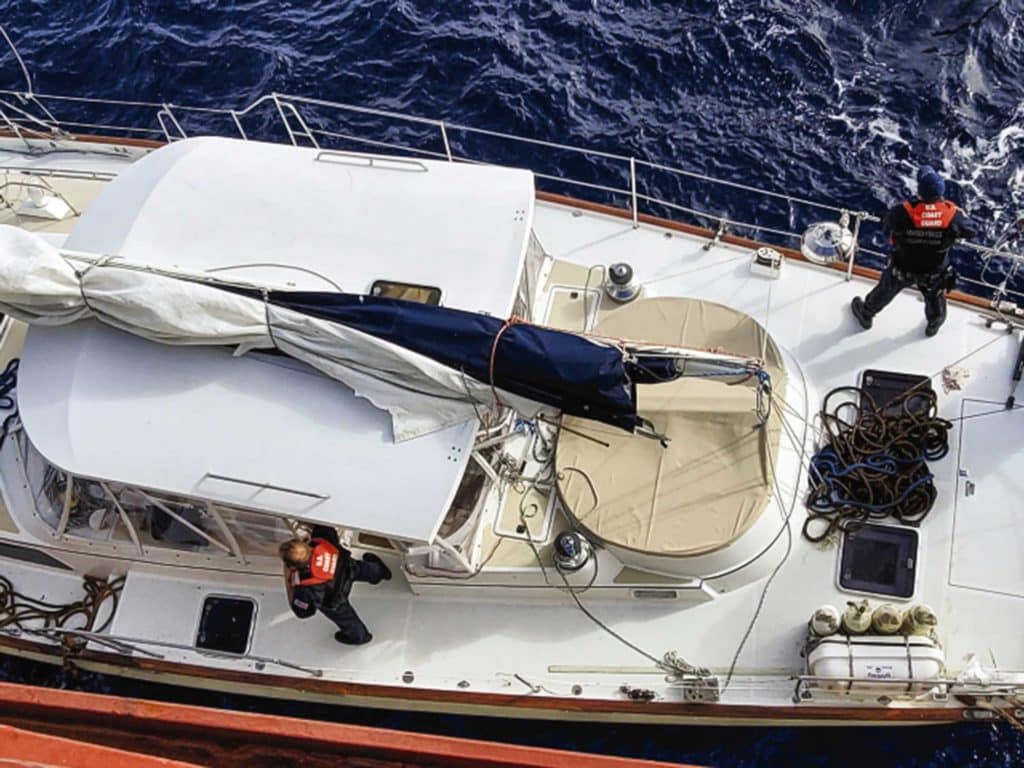
By this time our crew was trying to get back on board Drummer, again by the Jacob’s ladder. The Coast Guard determined that this was probably not the best or safest way to transfer people, so they made the call to cast off Sophe Schulte and transfer the remaining crew using their RIB; we did so, and the master of the tanker deftly moved it away from us. After the paperwork was complete came the discussion between Capt. Chuck and the skipper of Webber. We were given a choice: Take a tow now and they would tow us to the nearest port, or we were on our own. This was a one-time, right-now offer. It was clear they would not come back should we have more engine problems. Since we were not able to count on our engine, Chuck accepted the offer of the tow, and the heavy tow line was pulled over from Webber. The last of its crew left us with a handheld VHF and departed in the RIB. Soon we were under tow, headed for Fort Pierce, Florida, about 400 miles away.
Over the next two days, we tried to straighten up the mess. A sailboat without a mast in the open ocean is something. With no spar or sails, we were rolling gunwale to gunwale, and everything was “relocated.” We fine-tuned the position of the wheel to keep the boat tracking behind Webber. A mere 1-inch movement of Drummer’s helm would make a difference as to how well we followed Webber. Thankfully the seas were calm, and they were able to tow us at almost 10 knots. (Quick aside: A month after all this, Capt. Chuck pulled the fuel-line pickup tubes out of the tanks. Some genius had soldered fine mesh screening over the ends of the tubes, kind of a pre-filter you couldn’t check. It had never been a problem until we lost the mast and were rolling in the open ocean. Some gunk had gotten dislodged and plugged things up.) Two days later, we arrived off Fort Pierce. A smaller Coast Guard tow boat was near the sea buoy; we dropped the tow lines, bid farewell to Webber, and were towed into the channel, where we tied up at the Dockside Marina.
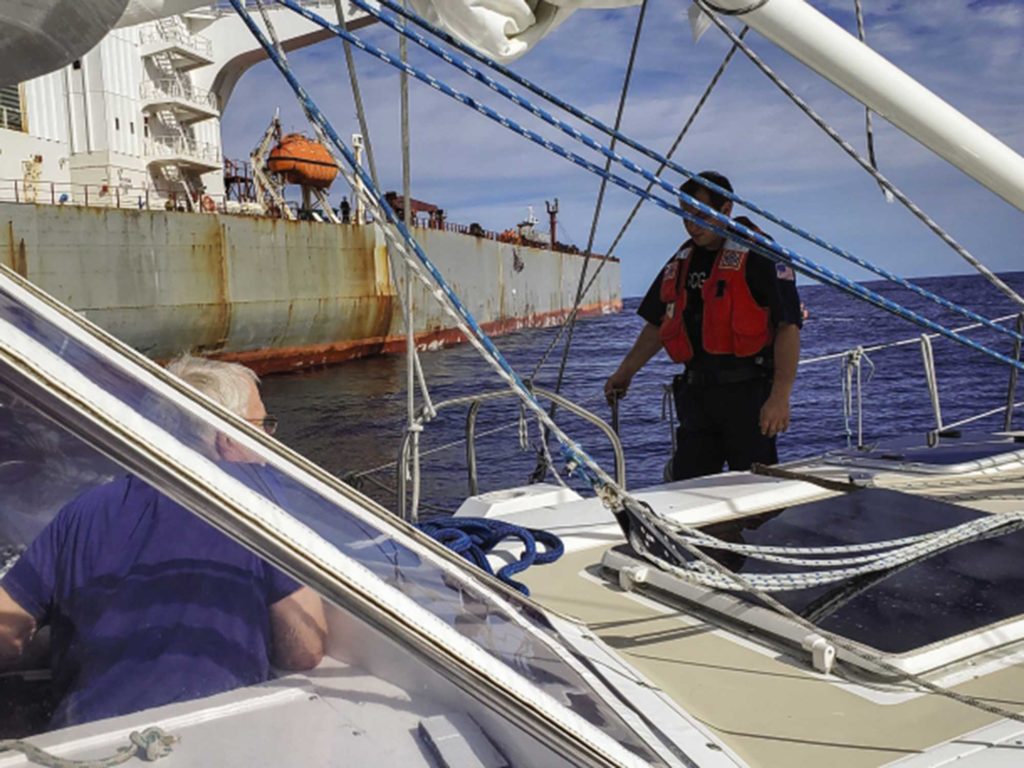
Here are a few things I learned. First, cotter pins. I have always bent them all the way around to get the ends protected. That’s fine until you have a situation that requires quick removal. I would suggest cutting pins to the appropriate length and splitting them just enough. Then apply silicone or tape to protect both the crew and the pins. Then they will be easier to remove.
Next, a spare VHF antenna with 20 feet of cable is very good, cheap insurance. A folding knife with the quick-change blades? A lifesaver. I have always carried single-edge razor blades, but this was better. A sharp knife can dull pretty quickly cutting modern sailing lines. And the sharp tin snips were also invaluable.
The crew of USCGC Bernard C. Webber did a great job on all accounts. Had they been involved earlier, things would have been far easier. But no one was injured during this whole episode, and the potential for injury was great. All in all, in retrospect, it was just another full day (or three) of “yachting.”
David White, one of the major pioneers of solo and shorthanded racing in the United States, founded the BOC Challenge “Around Alone” singlehanded around-the-world race, and competed in the event’s first two editions.

